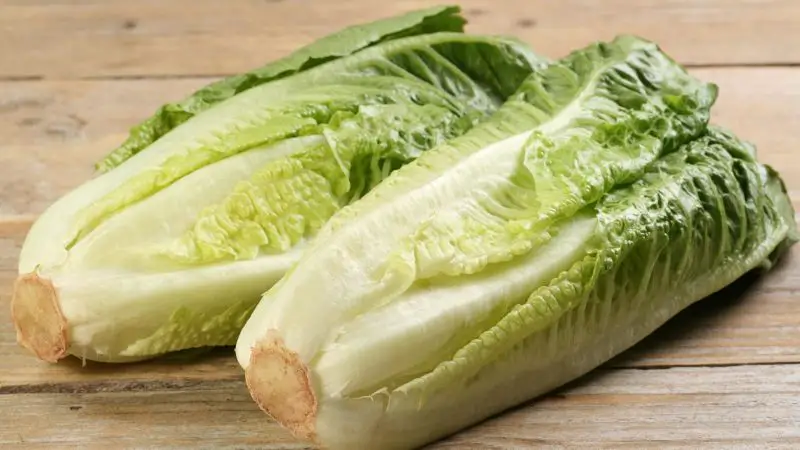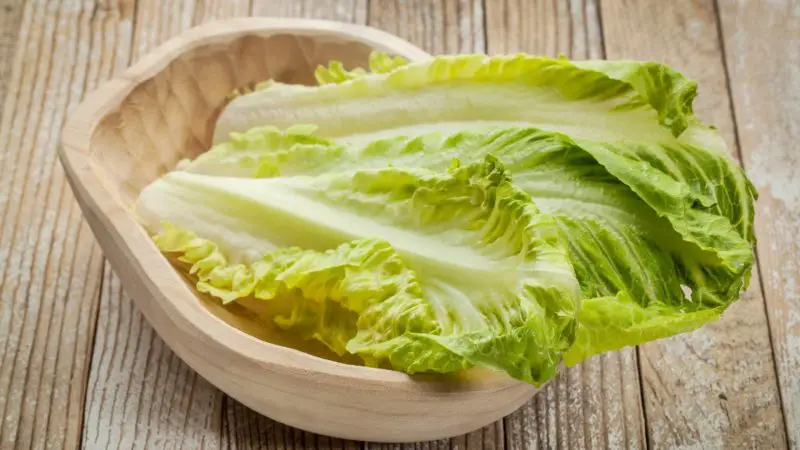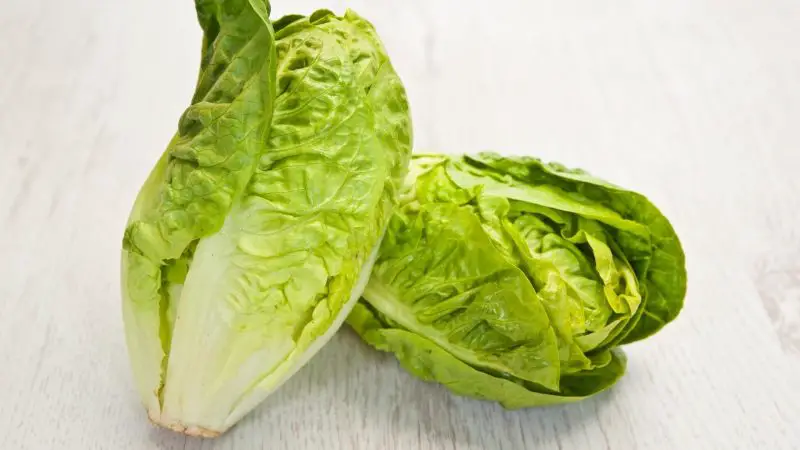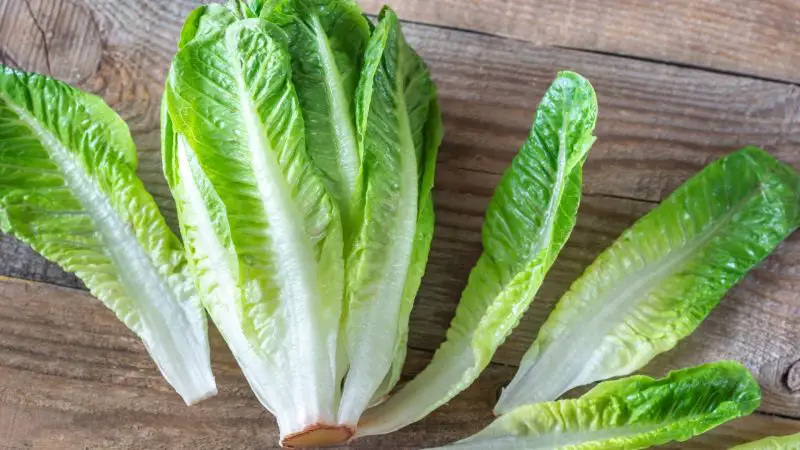Romaine lettuce is an amazing leafy vegetable that is used in soups, salads, and even as a food wrap. In this article, we are going to talk about guinea pigs and romaine lettuce.
So, can guinea pigs eat romaine lettuce? Guinea pigs can eat romaine lettuce. This is a crunchy and tasty plant that goes well with your guinea pig’s diet. Guinea pigs generally love crunchy foods, and this happens to be an excellent treat for your cute little pet. Besides, romaine lettuce is low in calories thus will not affect the overall caloric intake.
Romaine lettuce has several benefits and nutrients essential for your guinea pig. It has also some facts that you probably didn’t know about before. Read on to learn more.
Table of Content
Is Romaine Lettuce Good for Guinea Pigs? | Health Benefits

Your guinea pig will benefit greatly from eating romaine lettuce. These are some of the benefits:
It controls weight.
Even if the guinea pig eats a lot of romaine lettuce, it will not significantly increase its weight. Dietary fiber equally contributes to weight control in guinea pigs. This happens because dietary fiber is a natural filler nutrient and it increases guinea pigs’ safety.
The veggie boosts your guinea pig’s immune system.
You should know that guinea pigs don’t have a reliable immune system. Vitamin C will naturally boost guinea pigs’ immunity. Guinea pigs can neither create nor store vitamin C, and this is another reason why they need an external source for it.
Vitamin C helps in the production of white blood cells, and this translates into a stronger immunity for your guinea pig.
The plant helps in digestion.
The presence of dietary fiber in romaine lettuce will boost your guinea pig’s digestion and contribute to a smoother digestion process. Nutrients such as fiber make it easy for guinea pigs to digest food. Dietary fiber also helps with an upset stomach and constipation, which is vital for the healthy life of your guinea pig.
The vegetable contributes to the elimination of free radicals in the guinea pig’s body.
Metabolic processes in your guinea pig’s body can result in the production of free radicals. These free radicals can lead to cell damage among many other defects if present at high levels. This is why you need to find a way of reducing them in your guinea pig’s body.
One way to do this is through the introduction of foods that are rich in antioxidants. Romaine lettuce is filled with powerful antioxidants, such as vitamin A, which highly contributes to the elimination of free radicals.
Contributes to cardiovascular health.
Heart health is the key to the long lifespan of your guinea pig. Vitamins A and C have significant benefits when it comes to heart health.
One way to improve heart health is by cutting down on cholesterol levels because when the levels are high, it can cause the blockage of arteries.
Folate is yet another nutrient that may contribute to better heart health in a guinea pig, although not so much. Potassium, also present in romaine lettuce, is ideal for a healthy heart.
It ensures this by providing strength to the heart muscles so that they can contract and relax comfortably. Also, recent studies have shown that the mineral also helps to reduce high blood pressure.
Romaine lettuce boosts eye health.
The veggie has vitamin A which is a key to good sight and vision.
Nutrition Facts of Romaine Lettuce for Guinea Pigs

Romaine lettuce is a potent nutrient green, and this is evident in the following numerous nutrients:
- Vitamin C – This vitamin must top the list of essential nutrients needed by guinea pigs. Guinea pigs cannot naturally create nor store it by themselves. Therefore, they require an external source.
- Vitamin A – Another critical vitamin. It is a powerful antioxidant that gets rid of free radicals in addition to boosting eyesight and vision.
- Dietary fiber – Fiber is key to a sound digestive system and it also prevents conditions such as constipation and upset stomach.
- Calcium – This is a mineral that is important for the growth and development of strong bones and teeth. It is present in romaine lettuce at high levels.
- Potassium – This is a heart-related mineral that aids the heart muscles to move or contract with ease.
- Folate – It is a compound that aids with heart health and prevention of heart complications.
- Vitamin K – This is a vitamin that not only helps in calcium synthesis but also aids in blood clotting. It equally helps to prevent mineral loss in the bones and fractures.
- Phosphorus – This mineral works closely with the other mineral calcium in order to develop strong bones and teeth.
- Magnesium – It is a mineral that aids in the development of tissues. It also plays a vital role in muscles relaxing.
Is Romaine Lettuce Bad for Guinea Pigs? | Possible Risks

Just because romaine lettuce is packed with so many nutrients and has numerous benefits, it still has a few health risks.
- Possible chemical threat – Depending on your source for the vegetable, it could contain some chemicals that are not safe for your guinea pig’s consumption. The best way to deal with this is to wash the veggies before feeding them to your pet.
- Heavy metals – This is another genuine concern from romaine lettuce. Heavy metals can be fatal for your guinea pig. However, this is a risk that is also dependent on where you will get your romaine lettuce.
Serving Size and Frequency of Romaine Lettuce for Guinea Pigs

How Much Romaine Lettuce Should a Guinea Pig Eat?
Depending on the age of your guinea pigs, a normal serving size of lettuce is one to two medium-sized leaves. Everyone is perplexed by the size of lettuce feeding portions. Many people believe they can end up serving as much lettuce as they want, but it shouldn’t.
How Often Can Guinea Pigs Eat Romaine Lettuce?
Although no common lettuce is poisonous to guinea pigs, some may cause a Vitamin C insufficiency and some may cause bladder stones. Thus, it could be better if romaine lettuces will be served two to seven times a week.
They are the best lettuces for guinea pigs since they have a low calcium level and a high Vitamin C concentration. However, try to include some healthy leafy greens in your piggies’ meals along with the romaine lettuce.
Quick Facts on Romaine Lettuce
These are some of the interesting facts about romaine lettuce that you will enjoy:
- This plant can grow up to 12 inches in height.
- Romaine lettuce has a lifespan of one year.
- Ancient Romans and Greece used lettuce for sleep induction.
- Egyptians cultivated this plant over 6000 years ago.
- Other well-known varieties of lettuce apart from romaine include leaf and iceberg.
We have also made a full list of foods that guinea pigs can and can’t eat (150+ Types of Foods). Be sure to also check our recommended products page for everything you will ever need to assure a happy life for your guinea pigs. Hope this information was helpful and you have found the answer you were looking for.
List of Sources
Vitamin C Requirements of the Guinea-Pig
Dietary Requirements of the Guinea Pig With Reference to the Need for a Special Factor
